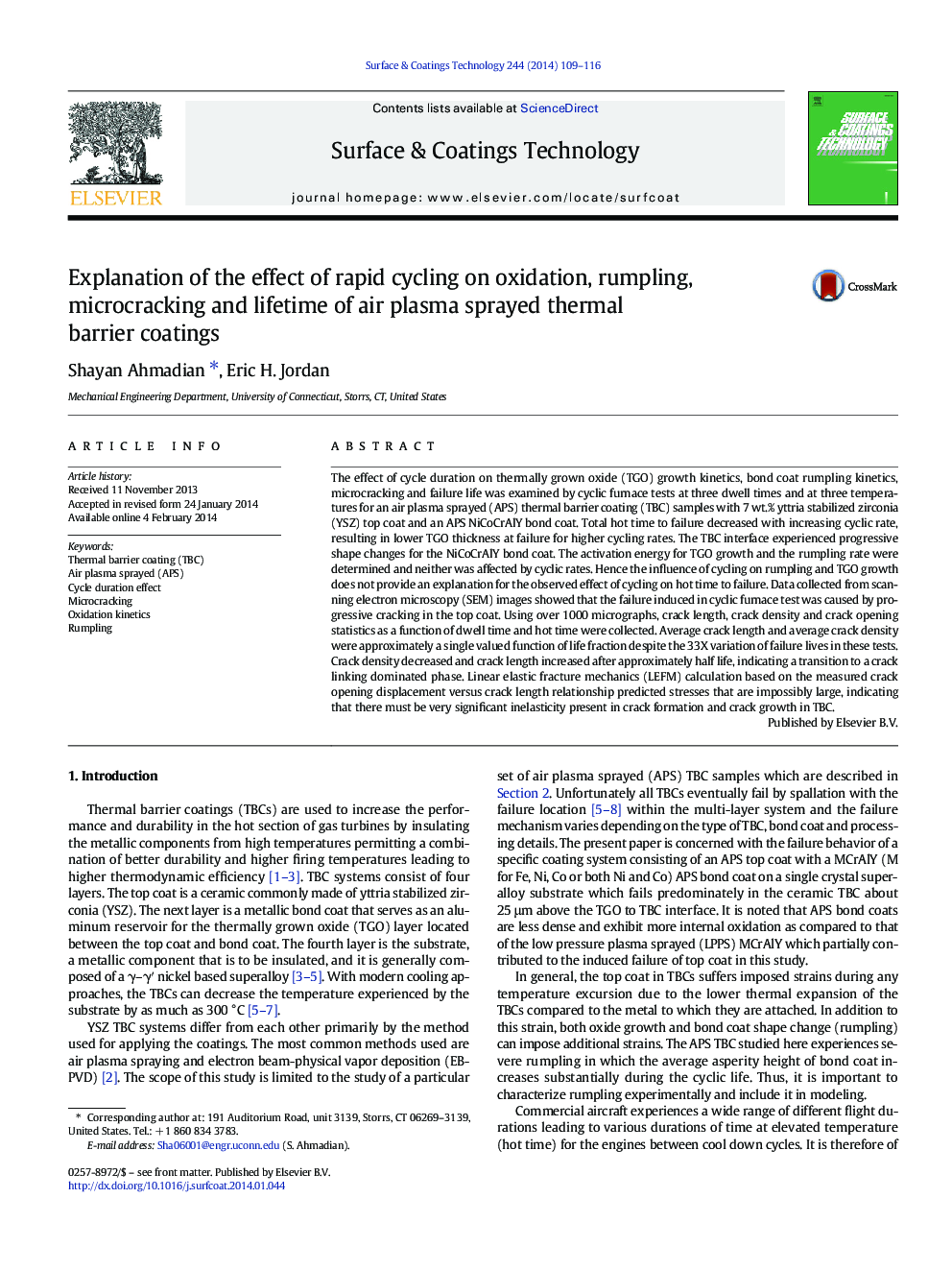| کد مقاله | کد نشریه | سال انتشار | مقاله انگلیسی | نسخه تمام متن |
|---|---|---|---|---|
| 8028020 | 1517634 | 2014 | 8 صفحه PDF | دانلود رایگان |
عنوان انگلیسی مقاله ISI
Explanation of the effect of rapid cycling on oxidation, rumpling, microcracking and lifetime of air plasma sprayed thermal barrier coatings
ترجمه فارسی عنوان
توضیح اثر دوچرخه سواری سریع بر روی اکسیداسیون، خرگوش، میکروکراکینگ و طول عمر پوشش های حرارتی پاشش پلاسما هوا
دانلود مقاله + سفارش ترجمه
دانلود مقاله ISI انگلیسی
رایگان برای ایرانیان
کلمات کلیدی
موضوعات مرتبط
مهندسی و علوم پایه
مهندسی مواد
فناوری نانو (نانو تکنولوژی)
چکیده انگلیسی
The effect of cycle duration on thermally grown oxide (TGO) growth kinetics, bond coat rumpling kinetics, microcracking and failure life was examined by cyclic furnace tests at three dwell times and at three temperatures for an air plasma sprayed (APS) thermal barrier coating (TBC) samples with 7Â wt.% yttria stabilized zirconia (YSZ) top coat and an APS NiCoCrAlY bond coat. Total hot time to failure decreased with increasing cyclic rate, resulting in lower TGO thickness at failure for higher cycling rates. The TBC interface experienced progressive shape changes for the NiCoCrAlY bond coat. The activation energy for TGO growth and the rumpling rate were determined and neither was affected by cyclic rates. Hence the influence of cycling on rumpling and TGO growth does not provide an explanation for the observed effect of cycling on hot time to failure. Data collected from scanning electron microscopy (SEM) images showed that the failure induced in cyclic furnace test was caused by progressive cracking in the top coat. Using over 1000 micrographs, crack length, crack density and crack opening statistics as a function of dwell time and hot time were collected. Average crack length and average crack density were approximately a single valued function of life fraction despite the 33X variation of failure lives in these tests. Crack density decreased and crack length increased after approximately half life, indicating a transition to a crack linking dominated phase. Linear elastic fracture mechanics (LEFM) calculation based on the measured crack opening displacement versus crack length relationship predicted stresses that are impossibly large, indicating that there must be very significant inelasticity present in crack formation and crack growth in TBC.
ناشر
Database: Elsevier - ScienceDirect (ساینس دایرکت)
Journal: Surface and Coatings Technology - Volume 244, 15 April 2014, Pages 109-116
Journal: Surface and Coatings Technology - Volume 244, 15 April 2014, Pages 109-116
نویسندگان
Shayan Ahmadian, Eric H. Jordan,
